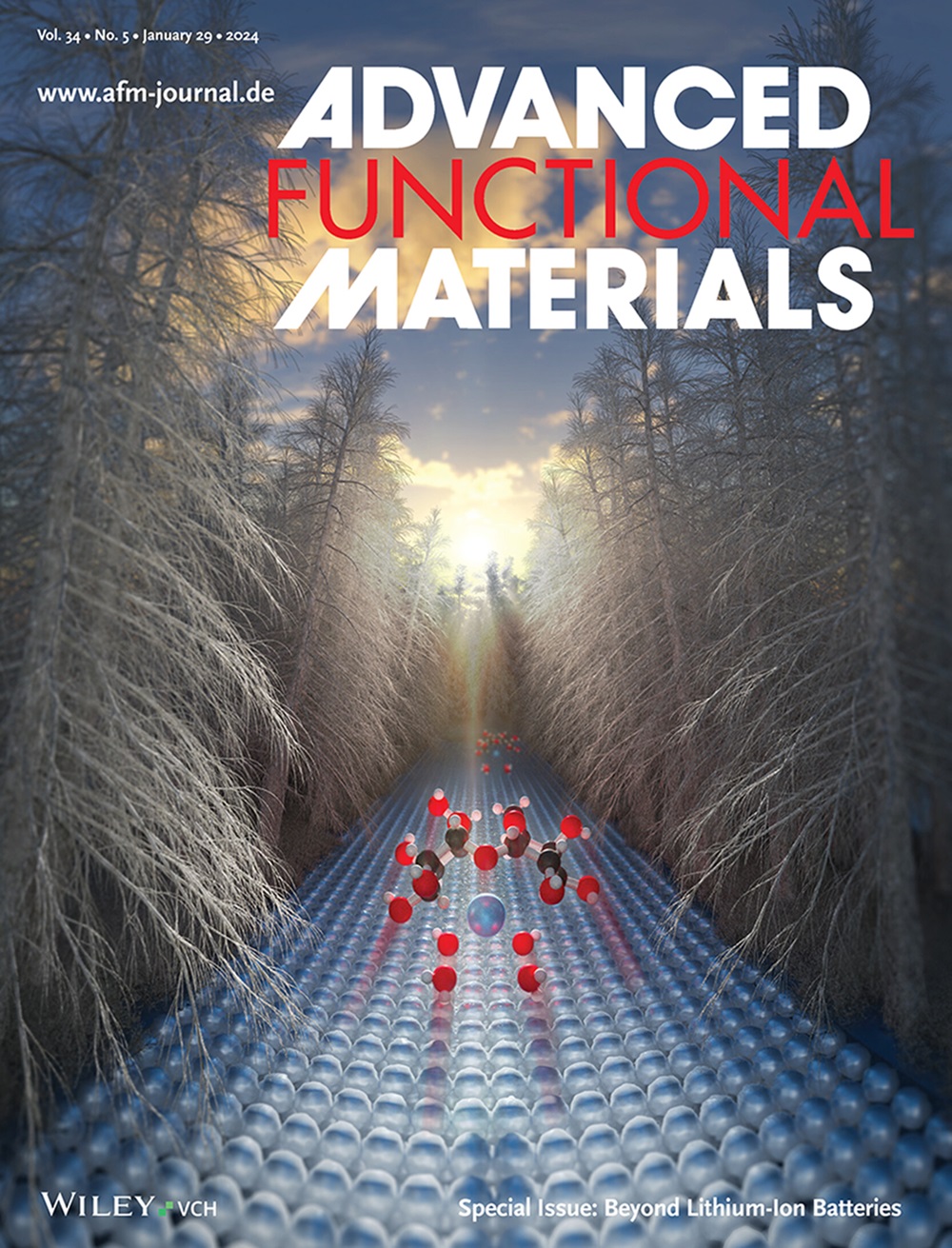Movable‐Type Printing and Chameleon‐Inspired Photothermal Bimodal Flexible Polymer Arrays for Spatiotemporally Programmable Multilevel Encryption
IF 19
1区 材料科学
Q1 CHEMISTRY, MULTIDISCIPLINARY
引用次数: 0
Abstract
Dynamic information encryption systems face critical challenges in achieving multimodal synergy, dynamic reconfigurability, and wearable compatibility. Traditional approaches relying on single‐stimulus mechanisms (e.g., photochromism or thermal actuation) suffer from static architectures and vulnerability to replication. Inspired by the reconfigurable logic of movable‐type printing and the chameleon's hierarchical color modulation, a bioinspired encryption paradigm is presented using photothermal bimodal flexible polymer arrays. Each array module integrates an ultraviolet (UV)‐responsive photochromic layer (spiropyran/spiropyrazine derivatives) for instantaneous optical decryption and a vertically aligned thermal conductive layer (liquid metal/MXene nanocomposites) for time‐resolved infrared encryption. The photochromic layer achieves instantaneous visible pattern switching with tunable fading kinetics (40–70 s), while the thermal layer leverages anisotropic heat dissipation (0.16–5.56 W m用于时空可编程多级加密的可移动印刷和变色龙启发的光热双峰柔性聚合物阵列
动态信息加密系统在实现多模态协同、动态可重构性和可穿戴兼容性方面面临严峻挑战。依赖于单一刺激机制(如光致变色或热致动)的传统方法存在静态架构和复制脆弱性。受可移动型印刷的可重构逻辑和变色龙的分层颜色调制的启发,采用光热双峰柔性聚合物阵列提出了一种受生物启发的加密范式。每个阵列模块集成了一个紫外(UV)响应光致变色层(螺吡喃/螺吡嗪衍生物),用于瞬时光学解密,以及一个垂直排列的导热层(液态金属/MXene纳米复合材料),用于时间分辨红外加密。光致变色层实现了瞬时可见模式切换和可调的衰落动力学(40-70 s),而热层利用各向异性散热(0.16-5.56 W m−1 K−1)来产生时空演化的红外特征。最重要的是,模块化架构可以通过物理重排实现原位信息重新配置,克服了传统系统的静态限制。演示包括具有顺序光热解密的多级安全性(例如,通过UV的“027”,通过IR的“358”,“2769”)和符合曲面的可编程可穿戴阵列。这项工作为防伪、动态认证和机密文件传输领域的自适应、高安全性应用建立了一个范例,将纳米材料创新与动态信息保护联系起来。
本文章由计算机程序翻译,如有差异,请以英文原文为准。
求助全文
约1分钟内获得全文
求助全文
来源期刊

Advanced Functional Materials
工程技术-材料科学:综合
CiteScore
29.50
自引率
4.20%
发文量
2086
审稿时长
2.1 months
期刊介绍:
Firmly established as a top-tier materials science journal, Advanced Functional Materials reports breakthrough research in all aspects of materials science, including nanotechnology, chemistry, physics, and biology every week.
Advanced Functional Materials is known for its rapid and fair peer review, quality content, and high impact, making it the first choice of the international materials science community.
 求助内容:
求助内容: 应助结果提醒方式:
应助结果提醒方式:


